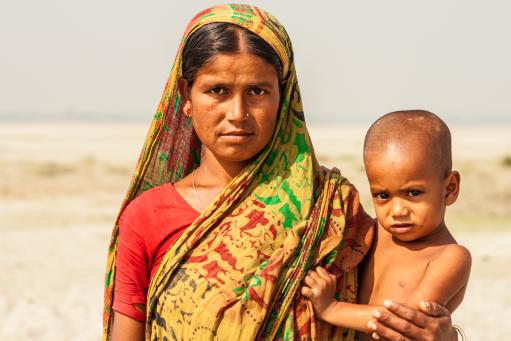Chronic poverty in the developing world can seem like an insoluble problem. But a long-term study from Bangladesh co-authored by an MIT economist presents a very different picture: When rural poor people get a one-time capital boost, it helps them accumulate assets, find better occupations, and climb out of poverty.
In particular, the study strongly suggests that poverty is not principally the product of people’s capabilities or attitudes. Rather, the very poor are usually mired in a poverty trap, in which an initial lack of resources prevents them from improving their circumstances. But the sudden acquisition of a productive asset — even, say, one cow — via a randomized asset transfer program can help spring the poor from that trap if it brings them above a basic wealth threshold. Instead of being farm laborers or domestic servants, rural people take up livestock rearing and more land cultivation, and sustain better incomes.
“The poor in these contexts are not unable to take on more productive employment, they simply lack the productive assets to do so,” says Clare Balboni, an assistant professor of economics at MIT and co-author of a published paper detailing the study’s findings.
The study adds evidence explaining what lies behind the success of “big push” antipoverty programs, which often center on significant one-time interventions. As the paper states, “big push policies which transform job opportunities represent a powerful means of addressing the global mass poverty problem.” Such programs have gained traction over the last 15 years or so.
The paper, “Why Do People Stay Poor?” appears in the May issue of the Quarterly Journal of Economics. The co-authors are Balboni, who is the 3M Development Assistant Professor of Environmental Economics in MIT’s Department of Economics; Oriana Bandiera, a professor of economics at the London School of Economics (LSE); Robin Burgess, a professor of economics at LSE; Maitreesh Ghatak, a professor of economics at LSE; and Anton Heil, a research manager at LSE.
Mind the gap
To conduct the study, the scholars examined data from a long-term survey project involving 23,000 households in 1,309 villages, administered by BRAC, a major NGO in Bangladesh. That project included a specific antipoverty program covering 6,000 poor rural households: Women in half of those households were offered a one-time asset transfer of about $500 and complementary training and support in 2007, while the rest served as a control group after 2011, with surveys of the households conducted in 2007, 2009, 2011, 2014, and 2018.
An earlier published paper, by some of this paper’s LSE-based co-authors, quantifies the experiment’s material gains. After four years, for women given a cow in 2007, earnings increased by 37 percent, consumption rose 10 percent, ownership of household durables increased 110 percent, and extreme poverty (those living on under $1.25 per day) declined 15 percent, compared to the control group.
In short, this intervention works. But why? The current paper closely scrutinizes the BRAC data to arrive at an explanation. The villages in the BRAC experiment have a “bimodal” wealth distribution: Some people have very few assets, while others have significantly more, with a gap in between the two levels. As it happens, when people in the poorest group receive a $500 asset, it leaves them in the gap between those levels.
The poor do not stay in that gap, however, after receiving that $500 asset. Tracking households over time, the researchers identified a striking pattern. The gap in between wealth levels is actually a threshold. People whose acquisition of the $500 allowed them to surpass that threshold gained income and wealth over time, while those below it remained poor.
Essentially, acquiring even one cow allowed members of very poor households to move from being under-employed laborers to working more with livestock and in land cultivation. It’s not that the poor did not want to work; hours worked actually rose when people had more work options. The study estimates that 98 percent of poor households consisted of wage laborers before the intervention, whereas about 98 percent would choose to devote some hours to livestock rearing, given enough assets.
“The poor are trapped in these occupations as a result of the fact that they are born poor,” Balboni says.
A growing interest in big pushes
The findings about the BRAC program in Bangladesh fit a burgeoning literature that has examined “big push” programs and their implications. And while Balboni focuses much of her research on environmental economics, other MIT scholars have also analyzed this subject.
In a paper published in late 2021, MIT economists Abhijit Banerjee and Esther Duflo, with doctoral student Garima Sharma, found that a similar BRAC program in rural India generated generated income increases of 30 percent while producing economic benefits at least four times the cost of the program (and possibly much more). Banerjee and Duflo have also examined evidence across the field on poverty trap dynamics.
In the case of the BRAC program in Bangladesh, the current study estimates that the economic misallocation resulting from the poverty trap in this setting is 15 times the one-time cost of taking households across the poverty threshold.
“We really need these big-push policies that tap into talent,” says Balboni, who also recently presented the paper in person to students in MIT’s MicroMasters Program in Data, Economics, and Development Policy.
Funding for the research was provided, in part, by The British Academy, as well as the U.K.’s Economic and Social Research Council-Department for International Development.
